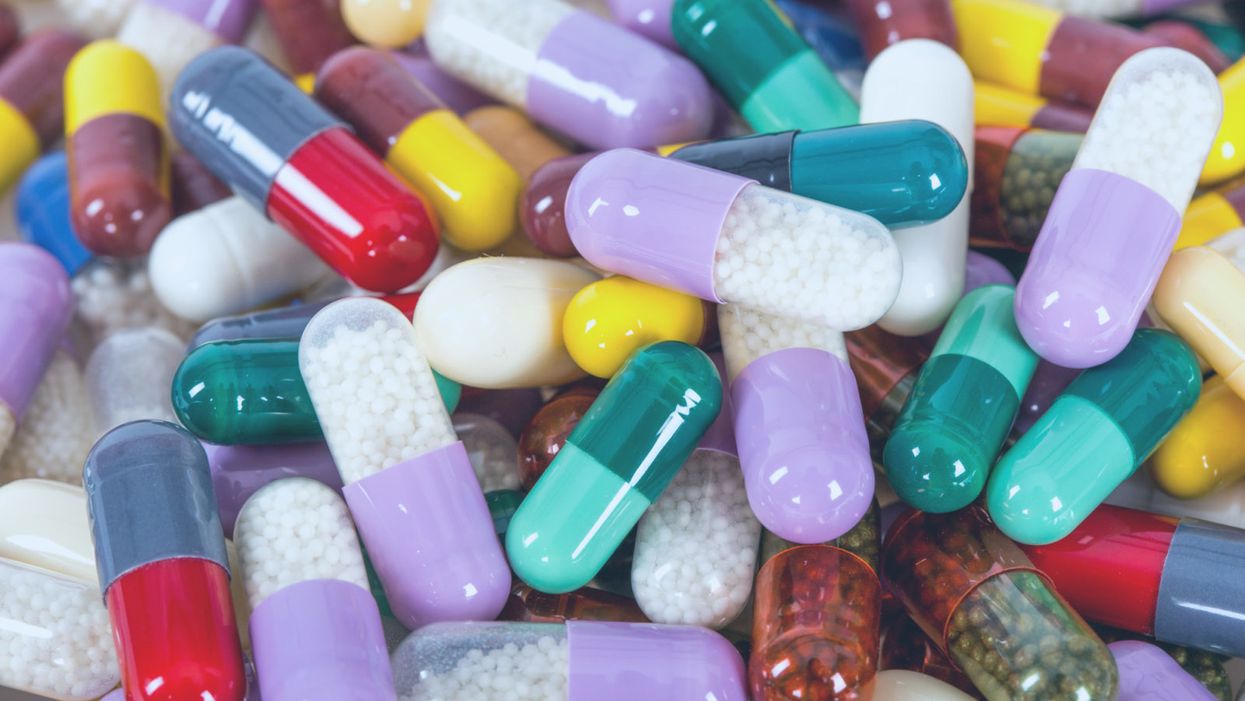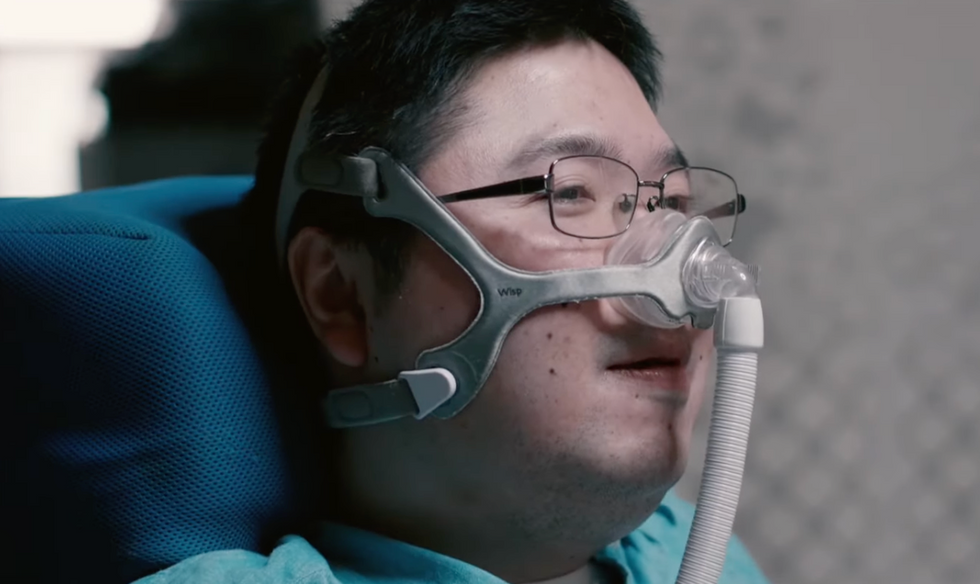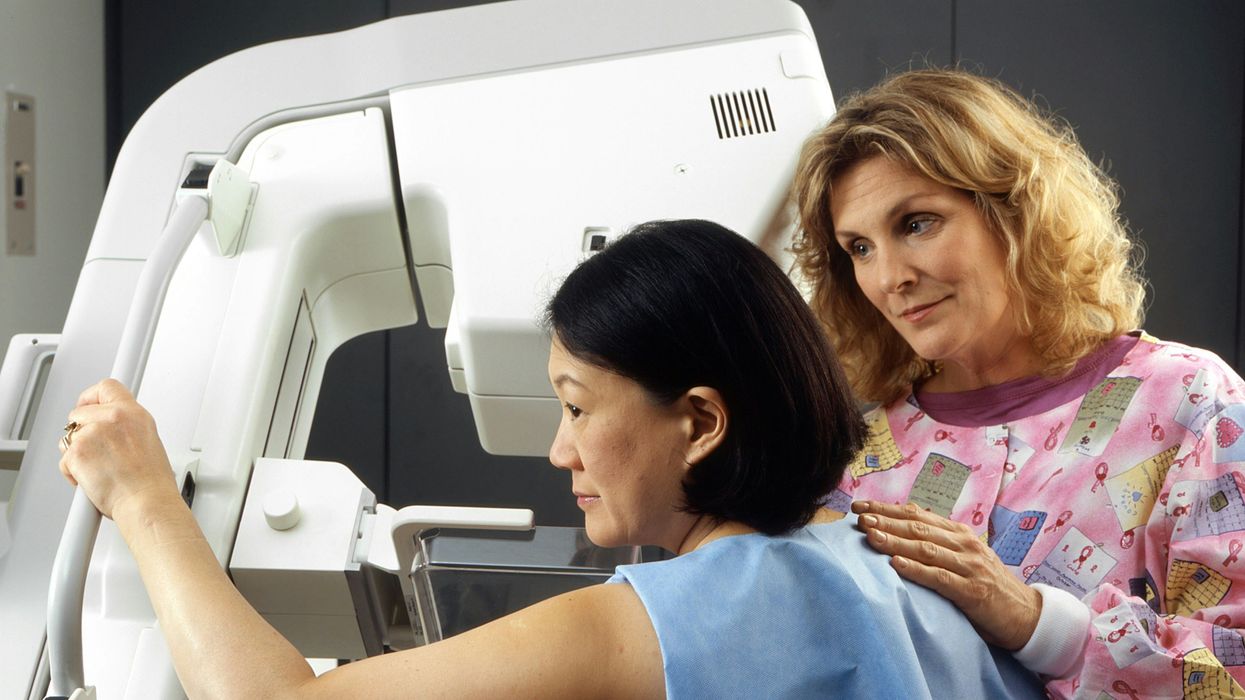Could Your Probiotic Be Making You Sicker?

A spread of colorful pills.
Mindy D. had suffered from constipation for years when her gastroenterologist advised her, at 38, to take a popular over-the-counter probiotic. Over the next two years, she experimented with different dosages, sometimes taking it three times a day. But she kept getting sicker—sometimes so ill she couldn't work.
"We shouldn't just presume probiotics are safe."
Her symptoms improved only after she traveled from Long Island to Georgia to see Satish S. C. Rao, a gastroenterologist at Augusta University. "The key thing was taking her off probiotics and treating her with antibiotics," he says.
That solution sounds bizarre, if, like many, you believe that antibiotics are bad and probiotics good. Millions of Americans take probiotics—live bacteria deemed useful—assuming there can be only positive effects. The truth is that you really don't know how any probiotic will affect you. To quote the American Gastroenterological Association Center for Gut Microbiome Research and Education, "It remains unclear what strains of bacteria at what dose by what route of administration are safe and effective for which patients."
"We shouldn't just presume probiotics are safe," says Purna Kashyap, a gastroenterologist from the Mayo Clinic, in Rochester, Minnesota, and a member of the Center's scientific advisory board. Neither the U.S. Food and Drug Administration or the European Food Safety Authority have approved probiotics as a medical treatment. Things can go very wrong in the ill: Among patients with severe acute pancreatitis, one study found that a dose of probiotics increased the chance of death. Even randomized controlled trials of probiotics rarely report harms adequately and the effect over the long-term has not been studied.
Many people pick up a product at a drug store or health store without ever telling a doctor. Doctors are fans, too: in a 2017 survey of healthcare providers at Stanford, more than 60 percent of the respondents said they prescribed probiotics. Many did so inconsistently, leaving the choice of which probiotic up to the patient. Healthy people take them for a range of unproven benefits, including protection from infections or heart disease or to sharpen their brains.
It's fine—unless it isn't. "Probiotics are capable of altering the microbiome in unpredictable ways," explains Leo Galland, an internist in New York who specializes in difficult digestions. "I've had patients who got gas and bloating, constipation or diarrhea from probiotics."
Your Microbiome Is Unique
The booming probiotic market has fed on excitement about the new science of the microbiome, the genetic material of all the microbes that live in our bodies and on our skin. Microbes make up 1 to 3 percent of every human being's body mass—you carry trillions of them, including more than a hundred species and thousands of strains. To identify a microbe, you need to know the genus, species and strain. For example, in Lactobacillus rhamnosus GG, the ingredient in the OTC probiotic Culturelle, Lactobacillus is the genus, rhamnosus is the species and GG is the strain designation.
Variations in your microbiome could help explain why you put on weight or suffer from Crohn's or depression. Each of us has our own unique mix.
A decade ago, the U.S. National Institute of Health (NIH) launched the Microbiome Project to establish a baseline description of health. Scientists sequenced the DNA in more than 2,200 strains, still a small fraction of the whole.
Within a couple of years, we had evidence that our microbiomes are distinctive. Another team used the NIH data set to look into the idea of microbial "fingerprints." A classic computer science algorithm allowed it to assign individuals "codes" defined by DNA sequences of their microbes—no human DNA required. Using information solely from the guts, "Eighty percent of individuals could still be uniquely identified up to a year later," they wrote.
That distinctiveness makes a difference when we try to change our mix by swallowing bacteria considered "pro." Even in healthy people, the reactions to probiotics vary widely, according to a study in Cell in September. The team examined the intestines of healthy volunteers who had taken a cocktail of eleven strains of probiotics for the experiment. Which took up residence in the intestinal lining? The answer depended on the person. Led by Eran Segal and colleagues at the Weizmann Institute of Science, in Rehovot, Israel, the authors concluded that effective supplements would have to be personalized.
Patients with "brain fog" improved dramatically when they were taken off their probiotics and given antibiotics as well.
To truly customize a probiotic, however, we'd have to know the state of an individual's gut microbiome, identify danger signs and link them to symptoms, isolate relevant strains of probiotics that might be needed, and get them into the gut lining effectively. Commercial tests are still at step one. Several companies claim to assess your microbiome based on a stool sample—but the Weizmann team has also shown that the differences between our gut linings aren't apparent from our stool. Galland has explored testing his patients looking for ways to help. "I've concluded that uBiome, American Gut Project, and others don't yield useful information," he observes.
Can A Probiotic Make Your Brain Foggy?
Besides taking her probiotic, Mindy D. had cut out gluten and upped her vegetables and fruits. But soon after she ate her seemingly healthy meals, she would begin to feel dizzy and sometimes even slurred her words, as if she were drunk. "It was such an intense feeling," she said.
A slender 5 ft. 2 inches, she dropped 20 pounds, becoming unhealthily thin. She traveled to see specialists in Minnesota and Connecticut and took two month-long medical leaves before she found Rao in Georgia.
In June, Rao created a stir when he and his coauthors reported that a cluster of his patients with "brain fog"—the "intense feeling" Mindy D. described—improved dramatically when they were taken off their probiotics and given antibiotics as well.
His idea was that lactobacilli and other bacteria colonized their small intestines, rather than making it to the colon as intended—a condition known as "small intestinal bacteria overgrowth" (SIB0) that some gastroenterologists treat with antibiotics. In this group, he argues, the small intestine produced the brain fog symptoms as a consequence of D-lactic acidosis, a phenomenon usually associated with damaged intestines. "If you have brain fogginess along with gas and bloating, please don't take probiotics," Rao says.
The paper prompted a rebuttal at the end of September from Eamonn Quigley, a gastroenterologist at Houston Methodist, who criticized the methodology in detail. Kashyap, of the Mayo Clinic, is skeptical as well. "People were picked for their brain fogginess and they were taking probiotics. Probiotics could be an innocent bystander," he says.
"It's hard for me to imagine the mechanism of say, Culturelle, causing SIB0," says Shira Doron, a specialist in infectious diseases and associate professor at Tufts University School of Medicine who studies probiotics. "The vast majority of people will never suffer a side effect from a probiotic. But probiotics are a live organism so they have a unique set of potential risks that other supplements don't have. They can give you a severe infection in very rare circumstances."
The larger point is that probiotics should be used under a doctor's care. In April, a panel of 14 experts on behalf of the European Society for Primary Care Gastroenterology concluded that "specific probiotics are beneficial in certain lower GI problems." That does not mean any over-the-counter probiotic is likely to help you because it helped your cousin.
"Even your doctor may be going by anecdotal experience, rather than hard science."
Both Galland and Rao use probiotics in their practice, but carefully. "We advise caution against excessive and indiscriminate use of probiotics especially without a well-defined medical indication, and particularly in patients with gastrointestinal dysmotility," when the muscles of the digestive system don't work normally, Rao's team wrote.
"Because there are so many studies out there that are poorly done, that aren't looking at side effects, the science is murky. Even your doctor may be going by anecdotal experience, rather than hard science," Doron adds. Your doctor may tell you that many of his patients report a great experience with probiotics. As Doron points out, however, with disorders like irritable bowel syndrome, the most common gastrointestinal diagnosis, the placebo effect is very strong. Many patients could "respond to anything if they believe it works," she says.
A robot server, controlled remotely by a disabled worker, delivers drinks to patrons at the DAWN cafe in Tokyo.
A sleek, four-foot tall white robot glides across a cafe storefront in Tokyo’s Nihonbashi district, holding a two-tiered serving tray full of tea sandwiches and pastries. The cafe’s patrons smile and say thanks as they take the tray—but it’s not the robot they’re thanking. Instead, the patrons are talking to the person controlling the robot—a restaurant employee who operates the avatar from the comfort of their home.

It’s a typical scene at DAWN, short for Diverse Avatar Working Network—a cafe that launched in Tokyo six years ago as an experimental pop-up and quickly became an overnight success. Today, the cafe is a permanent fixture in Nihonbashi, staffing roughly 60 remote workers who control the robots remotely and communicate to customers via a built-in microphone.
More than just a creative idea, however, DAWN is being hailed as a life-changing opportunity. The workers who control the robots remotely (known as “pilots”) all have disabilities that limit their ability to move around freely and travel outside their homes. Worldwide, an estimated 16 percent of the global population lives with a significant disability—and according to the World Health Organization, these disabilities give rise to other problems, such as exclusion from education, unemployment, and poverty.
These are all problems that Kentaro Yoshifuji, founder and CEO of Ory Laboratory, which supplies the robot servers at DAWN, is looking to correct. Yoshifuji, who was bedridden for several years in high school due to an undisclosed health problem, launched the company to help enable people who are house-bound or bedridden to more fully participate in society, as well as end the loneliness, isolation, and feelings of worthlessness that can sometimes go hand-in-hand with being disabled.
“It’s heartbreaking to think that [people with disabilities] feel they are a burden to society, or that they fear their families suffer by caring for them,” said Yoshifuji in an interview in 2020. “We are dedicating ourselves to providing workable, technology-based solutions. That is our purpose.”

Shota, Kuwahara, a DAWN employee with muscular dystrophy, agrees. "There are many difficulties in my daily life, but I believe my life has a purpose and is not being wasted," he says. "Being useful, able to help other people, even feeling needed by others, is so motivational."
A woman receives a mammogram, which can detect the presence of tumors in a patient's breast.
When a patient is diagnosed with early-stage breast cancer, having surgery to remove the tumor is considered the standard of care. But what happens when a patient can’t have surgery?
Whether it’s due to high blood pressure, advanced age, heart issues, or other reasons, some breast cancer patients don’t qualify for a lumpectomy—one of the most common treatment options for early-stage breast cancer. A lumpectomy surgically removes the tumor while keeping the patient’s breast intact, while a mastectomy removes the entire breast and nearby lymph nodes.
Fortunately, a new technique called cryoablation is now available for breast cancer patients who either aren’t candidates for surgery or don’t feel comfortable undergoing a surgical procedure. With cryoablation, doctors use an ultrasound or CT scan to locate any tumors inside the patient’s breast. They then insert small, needle-like probes into the patient's breast which create an “ice ball” that surrounds the tumor and kills the cancer cells.
Cryoablation has been used for decades to treat cancers of the kidneys and liver—but only in the past few years have doctors been able to use the procedure to treat breast cancer patients. And while clinical trials have shown that cryoablation works for tumors smaller than 1.5 centimeters, a recent clinical trial at Memorial Sloan Kettering Cancer Center in New York has shown that it can work for larger tumors, too.
In this study, doctors performed cryoablation on patients whose tumors were, on average, 2.5 centimeters. The cryoablation procedure lasted for about 30 minutes, and patients were able to go home on the same day following treatment. Doctors then followed up with the patients after 16 months. In the follow-up, doctors found the recurrence rate for tumors after using cryoablation was only 10 percent.
For patients who don’t qualify for surgery, radiation and hormonal therapy is typically used to treat tumors. However, said Yolanda Brice, M.D., an interventional radiologist at Memorial Sloan Kettering Cancer Center, “when treated with only radiation and hormonal therapy, the tumors will eventually return.” Cryotherapy, Brice said, could be a more effective way to treat cancer for patients who can’t have surgery.
“The fact that we only saw a 10 percent recurrence rate in our study is incredibly promising,” she said.

